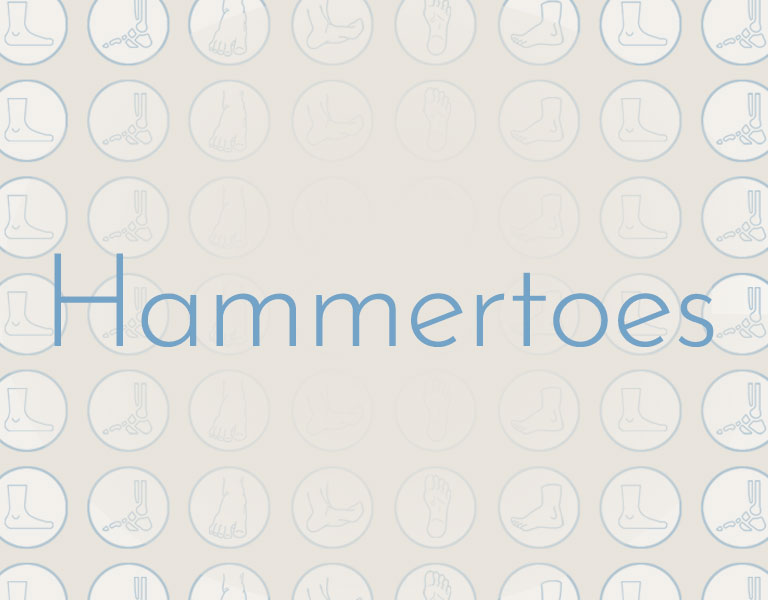Hammertoes
Hammertoes
Claw toes and Hammertoes are fairly common conditions among people in cultures that wear shoes. In most cases, these problems can be traced to improperly fitting shoes.
Anatomy
The hammertoe deformity usually starts on the larger toes and creates a curved appearance, often a result of shoes that are too short. If the deformity isn’t corrected, over time the other toe joints will become hyperextended and also curl.
Symptoms
Starting out flexible and becoming rigid over time, toes that are squished day after day become fixed in the curled position and will not straighten out. Pressure builds up at the end of the toe and over the joints, causing painful calluses to develop.
Diagnosis
Diagnosis is obvious from the physical exam. In some cases, special tests may be required to make sure no other nerve problems are to blame for the condition.
Medical Treatment
Early in the process, simply switching to shoes that fit properly can stop the process and return the toes to a more normal condition. If the condition is more advanced and the toes will not completely straighten out on their own, a contracture may exist. Pressure points and calluses caused by the contractures can be treated by switching to shoes that have more room in the toes or by placing pads over the calluses to relieve the pressure. If all else fails, surgery may be suggested to correct the alignment of the toe. After surgery, you will usually be fitted with a postoperative shoe with a stiff, wooden sole that protects the toes by keeping the foot from bending. Pins placed in the toes during surgery to help them heal straight are usually removed after 2 or 3 weeks.



